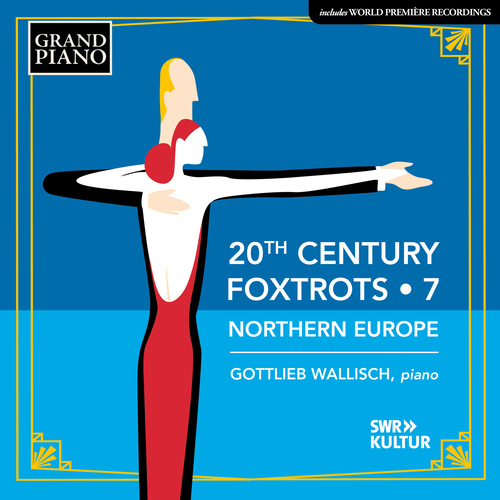
About this Release
Catalogue No.: GP950
Release Date: July 2025
Barcode: 747313995011
Composer(s):
- Kees van Baaren
- Frank Bridge
- Erik Chisholm
- Frederick Delius
- Rudolf Escher
- Hans Franco Mendes
- Jacob Gade
- Kristian Hauger
- Fini Henriques
- Dick Kattenburg
- Leo Kok
- Jaap Kool
- Constant Lambert
- Ernst Linko
- Wilhelm Peterson-Berger
- Ernest Pingoud
- Ture Rangström
- Cyril Scott
- Svend Erik Tarp
- Alexander Voormolen
- William Walton
Artist(s): Gottlieb Wallisch
Link(s):
20TH CENTURY FOXTROTS • 7
Northern Europe
- Gottlieb Wallisch, piano
In this volume we discover how composers in England, Scotland, the Netherlands and the Nordic countries responded to the waves of jazz and syncopated dance music that had crossed the Atlantic and captivated European audiences. The album features a wide selection of famous and less well-known composers who each succeed in combining the authentic energising rhythms of foxtrots, tangos and shimmies with their own unique styles. Gottlieb Wallisch’s seventh and final volume in this acclaimed series features many unknown gems and world première recordings. A digital EP of bonus tracks by Bliss, Schnitzler and Hijman (GP962DR) is also available for download and streaming.
Tracklist
|
Delius, Frederick
|
|
1
Koanga: La Calinda (arr. H. Perry for piano) (1897) (00:03:44)
|
|
Scott, Cyril
|
|
2
Danse nègre, Op. 58, No. 5 (1908) (00:01:52)
|
|
Bridge, Frank
|
|
3
The Turtle's Retort (1919) (00:03:09)
|
|
Lambert, Constant
|
|
4
Elegiac Blues (version for piano) (1927) (00:02:11)
|
|
Walton, William
|
|
5
Façade Suite No. 2: V. Popular Song (arr. R. Douglas for piano) (1938) (00:02:27)
|
|
6
Façade Suite No. 2: VI. Old Sir Faulk (arr. R. Douglas for piano) (1938) (00:02:02)
|
|
Chisholm, Erik
|
|
7
Tango () (00:02:57)
|
|
Voormolen, Alexander
|
|
8
Le Souper Clandestin: Introduction, Valse et Fox-Trot (1921) (00:08:56)
|
|
Kok, Leo
|
|
9
Intermezzo en forme de tango (1923) (00:03:32)
|
|
Baaren, Kees van
|
|
10
Blues for Piano (1933) (00:02:48)
|
|
11
Pep and Swing, Novelty-Foxtrot (1933) (00:02:32)
|
|
Kool, Jaap
|
|
12
Boston d'été (simplified version for piano) (1923) (00:02:57)
|
|
Kattenburg, Dick
|
|
13
Tempo di blues (1940) (00:04:06)
|
|
Franco Mendes, Hans
|
|
14
10 kleine Etudes: No. 5. Poco moderato (Tempo di Fox-Trot) () (00:00:54)
|
|
Escher, Rudolf
|
|
15
Habanera (1945) (00:03:03)
|
|
Peterson-Berger, Wilhelm
|
|
16
3 Tondikter: No. 3. Amerikansk Dans (1926) (00:02:08)
|
|
Rangström, Ture
|
|
17
Sweet Fox (1937) (00:02:23)
|
|
Pingoud, Ernest
|
|
18
Tango oriental (version for piano) (1937) (00:03:29)
|
|
Linko, Ernst
|
|
3 Danze moderne (1926) (00:10:00 )
|
|
19
No. 1. Fox-Trot-Blues (00:03:16)
|
|
20
No. 2. Valse gracieuse (00:03:09)
|
|
21
No. 3. Tango (00:03:47)
|
|
Hauger, Kristian
|
|
22
Jule-Foxtrot () (00:02:29)
|
|
Gade, Jacob
|
|
23
Monna Vanna: Tango Blues (1924) (00:03:02)
|
|
24
Tidens Kvinders Smil: Ny Dans (1924) (00:02:20)
|
|
Tarp, Svend Erik
|
|
Mosaik, Op. 31 (1938) (00:06:00 )
|
|
25
No. 7. Foxtrot (00:00:28)
|
|
26
No. 8. Tango (00:00:57)
|
|
27
No. 9. Urskovs-Blues (Primeval-Forest-Blues) (00:00:46)
|
|
Henriques, Fini
|
|
28
Basta! Ama'rkansk Shimmy-Fox (1926) (00:01:17)
|
Total Time: 01:16:41
The Artist(s)
 Born in Vienna, Gottlieb Wallisch first appeared on the concert platform when he was seven years old, and at the age of twelve made his debut in the Golden Hall of the Vienna Musikverein. A concert directed by Yehudi Menuhin in 1996 launched Wallisch’s international career: accompanied by the Sinfonia Varsovia, the seventeen-year-old pianist performed Beethoven’s ‘Emperor’ Concerto.
Since then Wallisch has received invitations to the world’s most prestigious concert halls and festivals including Carnegie Hall in New York, Wigmore Hall in London, the Cologne Philharmonie, the Tonhalle Zurich, the NCPA in Beijing, the Ruhr Piano Festival, the Beethovenfest in Bonn, the Festivals of Lucerne and Salzburg, December Nights in Moscow, and the Singapore Arts Festival. Conductors with whom he has performed as a soloist include Giuseppe Sinopoli, Sir Neville Marriner, Dennis Russell Davies, Kirill Petrenko, Louis Langrée, Lawrence Foster, Christopher Hogwood, Martin Haselböck and Bruno Weil.
Orchestras he has performed with include the Vienna Philharmonic and Vienna Symphony Orchestras, the Royal Liverpool Philharmonic, the Gustav Mahler Youth Orchestra, the Frankfurt Radio Symphony, the Festival Strings Lucerne, the Franz Liszt Chamber Orchestra in Budapest, the Musica Angelica Baroque Orchestra in Los Angeles, and the Stuttgart Chamber Orchestra.
Born in Vienna, Gottlieb Wallisch first appeared on the concert platform when he was seven years old, and at the age of twelve made his debut in the Golden Hall of the Vienna Musikverein. A concert directed by Yehudi Menuhin in 1996 launched Wallisch’s international career: accompanied by the Sinfonia Varsovia, the seventeen-year-old pianist performed Beethoven’s ‘Emperor’ Concerto.
Since then Wallisch has received invitations to the world’s most prestigious concert halls and festivals including Carnegie Hall in New York, Wigmore Hall in London, the Cologne Philharmonie, the Tonhalle Zurich, the NCPA in Beijing, the Ruhr Piano Festival, the Beethovenfest in Bonn, the Festivals of Lucerne and Salzburg, December Nights in Moscow, and the Singapore Arts Festival. Conductors with whom he has performed as a soloist include Giuseppe Sinopoli, Sir Neville Marriner, Dennis Russell Davies, Kirill Petrenko, Louis Langrée, Lawrence Foster, Christopher Hogwood, Martin Haselböck and Bruno Weil.
Orchestras he has performed with include the Vienna Philharmonic and Vienna Symphony Orchestras, the Royal Liverpool Philharmonic, the Gustav Mahler Youth Orchestra, the Frankfurt Radio Symphony, the Festival Strings Lucerne, the Franz Liszt Chamber Orchestra in Budapest, the Musica Angelica Baroque Orchestra in Los Angeles, and the Stuttgart Chamber Orchestra. The Composer(s)
Kees van Baaren (1906–1970) spent part of the 1920s in Berlin before becoming a pupil of Willem Pijper, developing a modernistic language that culminated in his adoption (the first ever Dutch composer) of the twelve-tone technique. However, when he was in Berlin, van Baaren earned his living by playing jazz at the Kabarett der Unmöglichen (‘Cabaret of the Impossible’), having Fats Waller as his inspiration. He played the music ‘pretty well himself, with much more interesting chords than Waller used, but without a trace of swing’, as his student and jazz pianist Misha Mengelberg wrote. Evidence of this style remains in the two handwritten pieces Blues (c. 1933) and Pep and Swing, Novelty-Foxtrot (1933), where one can also hear the knowledge of real blues and the now intercontinental influence of Gershwin’s music.
The work of the English composer and viola player Frank Bridge is now beginning to enjoy some favour, not least through the fact that he was the teacher of Benjamin Britten (one of whose earlier works is based on a composition by Bridge).
Eric Chisholm (1904–1965), is now increasingly known to the public thanks to recordings that have revealed him to be the first composer to absorb Celtic idioms into his music, so much so that some nicknamed him MacBartók. An excellent pianist, Chisholm was a native of Glasgow who nonetheless travelled the world, eventually settling in South Africa after the Second World War. Always curious about the musical traditions of each country, he composed a Tango as early as 1926 in a languid but unrelenting style, within a by then supranational language, equally distant from Scotland as from Argentina.
Born in 1862 in Bradford of German parentage, Frederick Delius was sent by his father to Florida to be an orange grower. There he developed further his earlier musical interests and eventually persuaded his father to support him during a period of musical study at the Leipzig Conservatory, where he met Grieg. With continued paternal support he moved thereafter to Paris and in 1897 settled at Grez-sur-Loing with the painter Jelka Rosen, who later became his wife. His final years brought blindness and paralysis, the result of an early syphilitic infection, and his later music was dictated to the young English musician Eric Fenby, who became his amanuensis. Delius had a strong champion in the conductor Sir Thomas Beecham, who did much to bring his music before the British public. The musical language of Delius, with a characteristic harmony and lyricism of its own, often has a rhapsodic intensity of feeling.
 Rudolf Escher (1912–1980) saw almost all his early production destroyed in the bombing of Rotterdam in 1940. His Habanera (1945) shows how the second post-war period would no longer have the same light-hearted spirit as the first.
Rudolf Escher (1912–1980) saw almost all his early production destroyed in the bombing of Rotterdam in 1940. His Habanera (1945) shows how the second post-war period would no longer have the same light-hearted spirit as the first.  Hans Franco Mendes (1890–1951), a pianist, accompanist and composer, was deported with his wife (also a composer) via the Westerbork camp to the Theresienstadt/Terezín concentration camp, but both managed to survive. His piano music, the core of his production, deserves to be rediscovered for its rhythmic richness.
Hans Franco Mendes (1890–1951), a pianist, accompanist and composer, was deported with his wife (also a composer) via the Westerbork camp to the Theresienstadt/Terezín concentration camp, but both managed to survive. His piano music, the core of his production, deserves to be rediscovered for its rhythmic richness.  Jacob Gade’s Tango Jalousy is the best known piece of music written by any Dane. As late as the 1970s someone on the planet played Tango Jalousy once every minute, only the Beatles’ Yesterday could match its success. Jacob Gade (who was no relation of Niels W. Gade) began his career like many other Danish composers of his period as a country dance fiddler. He never had any formal training, but around the turn of the century was very successful as a bandleader and ‘Stehgeiger’ (standing lead violinist) at Copenhagen restaurants and theatres. His many light compositions, salon music ad well as revue songs, made him one of the most popular entertainment composers in the city. In 1921 he became leader of the big orchestra at the Palads Cinema in Copenhagen. It was as accompaniment to a silent film that he wrote his Tango Jalousy. When the silent film yielded place around 1931 to the ‘talking’ film with its own music, Jacob Gade ended his career as a performing musician. He moved back to the countryside, lived on the ample royalties from his entertainment music, and took the time to work with more ambitious orchestral pieces.
Jacob Gade’s Tango Jalousy is the best known piece of music written by any Dane. As late as the 1970s someone on the planet played Tango Jalousy once every minute, only the Beatles’ Yesterday could match its success. Jacob Gade (who was no relation of Niels W. Gade) began his career like many other Danish composers of his period as a country dance fiddler. He never had any formal training, but around the turn of the century was very successful as a bandleader and ‘Stehgeiger’ (standing lead violinist) at Copenhagen restaurants and theatres. His many light compositions, salon music ad well as revue songs, made him one of the most popular entertainment composers in the city. In 1921 he became leader of the big orchestra at the Palads Cinema in Copenhagen. It was as accompaniment to a silent film that he wrote his Tango Jalousy. When the silent film yielded place around 1931 to the ‘talking’ film with its own music, Jacob Gade ended his career as a performing musician. He moved back to the countryside, lived on the ample royalties from his entertainment music, and took the time to work with more ambitious orchestral pieces.
Kristian Hauger (1905–1977), despite his ‘classical’ studies, became a leading pianist with his own jazz orchestra and a composer mainly of hit songs, but also of operettas and comedies. Hauger came to prominence in 1927, winning a competition with his famous song Charleston i Grukkedalen. In that year he also composed the delightful Jule-Foxtrot for the Christmas 1927 issue of the Oslo music magazine Musik for Hjemmet (‘Music for Home’).
Fini Henriques was one of Denmark’s leading musicians, active and popular as both violinist and composer from the end of the nineteenth century. A straightforward and humorous person, he was well liked and yet, as a soloist, could deliver gripping and impressive performances. His discography is somewhat slight, as might be considered commensurate with his modest bearing and his predominantly home-based career: he lived in his native Denmark all his life.
 In the swing era, many more composers tried their hand at the new rhythms, even incorporating them into their classical style, with a predilection for tangos. Dick Kattenburg (1919–1944) was among those who suffered the tragedy of the Holocaust first-hand, deported and slaughtered in Auschwitz at the age of only 24. Forced from 1942 to renounce all assignments, he continued to compose using pseudonyms and arranging Jewish songs, labelling them as Romanian or Mexican melodies. Going into hiding, he continued to study with Leo Smit, a composer who suffered the same fate (he died in Sobibor in 1943), and who also influenced him musically. Kattenburg made the optimism of the Roaring Twenties his own, combining captivating melodic lines with jazzy rhythms and striking, often polytonal harmonies. Some melodic lines are reminiscent of Spirituals, as in Blues for piano four hands and the Tempo di Blues).
In the swing era, many more composers tried their hand at the new rhythms, even incorporating them into their classical style, with a predilection for tangos. Dick Kattenburg (1919–1944) was among those who suffered the tragedy of the Holocaust first-hand, deported and slaughtered in Auschwitz at the age of only 24. Forced from 1942 to renounce all assignments, he continued to compose using pseudonyms and arranging Jewish songs, labelling them as Romanian or Mexican melodies. Going into hiding, he continued to study with Leo Smit, a composer who suffered the same fate (he died in Sobibor in 1943), and who also influenced him musically. Kattenburg made the optimism of the Roaring Twenties his own, combining captivating melodic lines with jazzy rhythms and striking, often polytonal harmonies. Some melodic lines are reminiscent of Spirituals, as in Blues for piano four hands and the Tempo di Blues).  Leo Kok (1893–1992) was educated at home but found success mainly in Paris, where he first arrived as a footballer for the Dutch national team. A true jack-of-all-trades, Kok earned his living mainly as an accompanist for singers, composing in a light and seductive vein. His melodic facility also proved suitable for accompanying the performances of dancers, such as Charlotte Bara. However, it was for an Italo-Brazilian dancer duo that Kok composed his Intermezzo en forme de tango, first performed in 1923 in Buenos Aires.
Leo Kok (1893–1992) was educated at home but found success mainly in Paris, where he first arrived as a footballer for the Dutch national team. A true jack-of-all-trades, Kok earned his living mainly as an accompanist for singers, composing in a light and seductive vein. His melodic facility also proved suitable for accompanying the performances of dancers, such as Charlotte Bara. However, it was for an Italo-Brazilian dancer duo that Kok composed his Intermezzo en forme de tango, first performed in 1923 in Buenos Aires.
A composer with great ties to Berlin was Jaap Kool (1891–1959) who studied at the Stern Conservatorium, and remained linked to the German world both as a composer and as a conductor and saxophonist. He composed music to accompany ballerinas. Kool was the Dutch composer who most embodied the new musician of the inter-war years: a multi-instrumentalist, capable of fusing primitive dances with classical forms, and equally at ease as a composer of large symphonic forms, of small piano pieces.
The English composer and conductor Constant Lambert was a pupil of Vaughan Williams and a friend of the Sitwells. As a composer he came to be influenced by jazz and in general avoided the insular in a style more akin to that of Paris than London.
Ernst Linko (1889–1960) studied in St Petersburg and Germany, devoting himself to composition only as a form of distraction from his concert activity. He was in fact a pianist and piano teacher at the Sibelius Academy, and composed four piano concertos. A final year of study in Paris between 1924 and 1925 resulted in 3 Danze moderne, composed and published in Helsinki in 1926.
 After study in Stockholm and Dresden, the Swedish composer Peterson-Berger settled in the former city, working as a music critic and contributing in a variety of genres to national music, whether in Wagnerian operas, choral works, songs, chamber music or piano pieces. As a critic, conservative in his views, he continued to have considerable influence.
After study in Stockholm and Dresden, the Swedish composer Peterson-Berger settled in the former city, working as a music critic and contributing in a variety of genres to national music, whether in Wagnerian operas, choral works, songs, chamber music or piano pieces. As a critic, conservative in his views, he continued to have considerable influence.
Having become independent at the end of 1917, Finland had its first modernist musical revelation less than a year later, when Ernest Pingoud (1887–1942) conducted a concert of his own orchestral works. His late-Romantic symphonic poems related to Scriabin’s Symbolist world shook the Finnish music circles. Pingoud was born in St Petersburg and was educated there under Anton Rubinstein, Rimsky-Korsakov and Glazunov, before completing his studies with Max Reger in Leipzig. A musician of international culture, in a country committed to building a strong national identity, Pingoud was not successful with his cosmopolitanism.
 Born in Stockholm, the composer, critic and singer Ture Rangström studied there and with Pfitzner in Berlin. In Sweden his association with Strindberg was important, commemorated in his Symphony No. 1 ‘August Strindberg in memoriam’. After an earlier career as a singer, he later won a name for himself as a conductor.
Born in Stockholm, the composer, critic and singer Ture Rangström studied there and with Pfitzner in Berlin. In Sweden his association with Strindberg was important, commemorated in his Symphony No. 1 ‘August Strindberg in memoriam’. After an earlier career as a singer, he later won a name for himself as a conductor.
A pupil of Humperdinck and others in Frankfurt and a contemporary there of Grainger, Quilter and Balfour Gardiner, Cyril Scott embarked on a career as a composer and pianist in England in the early years of the 20th century. His later esoteric interests, on which he wrote, were reflected in his music, which is now unduly neglected.
Svend Erik Tarp was influenced by the French group "Les Six". The extreme mixed and dramatically moving characterizes his music, which include works for orchestra, symphonies, chamber music pieces, operas, and numerous scores for movies.
The influence of the great musical capitals is reflected in various ways in the aesthetics of individual composers. Alexander Voormolen, after being a pupil of Johann Wagenaar in Utrecht, continued his studies in Paris with Albert Roussel from 1916, attracting the attention of Maurice Ravel. In 1921, he wrote Le Souper clandestin in The Hague, consisting of Introduction, Valse et Fox-Trot, a typical example of his ‘French period’ in which his refined harmonic research predominated over the later neo-Classical (and neo-Flemish) melodic line.
 William Walton represents a period in English music between Vaughan Williams and Benjamin Britten. After serving as a chorister at Christ Church, Oxford, he later failed to complete his graduate studies and was for a time dependent on the patronage and encouragement of the Sitwell family. He spent his later years on the island of Ischia.
William Walton represents a period in English music between Vaughan Williams and Benjamin Britten. After serving as a chorister at Christ Church, Oxford, he later failed to complete his graduate studies and was for a time dependent on the patronage and encouragement of the Sitwell family. He spent his later years on the island of Ischia. 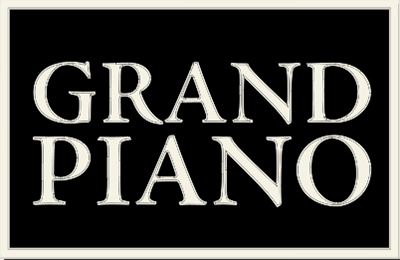
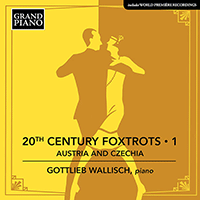
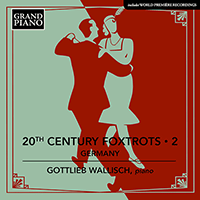
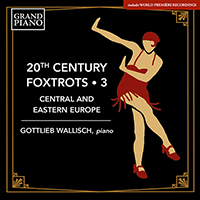
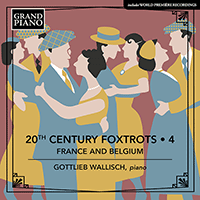
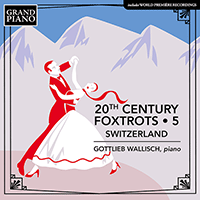
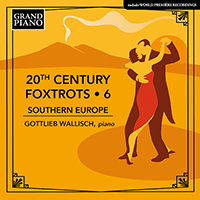
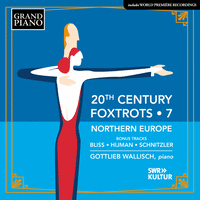
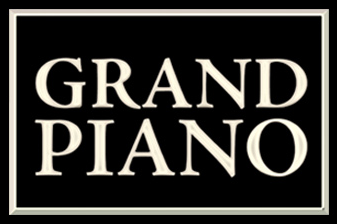 Grand Piano has gained a reputation for producing high quality recordings of rare keyboard gems. Dedicated to the exploration of undiscovered piano repertoire, the label specialises in complete cycles of piano works by many lesser-known composers, whose output might otherwise have remained unknown and unrecorded.
Grand Piano has gained a reputation for producing high quality recordings of rare keyboard gems. Dedicated to the exploration of undiscovered piano repertoire, the label specialises in complete cycles of piano works by many lesser-known composers, whose output might otherwise have remained unknown and unrecorded.






